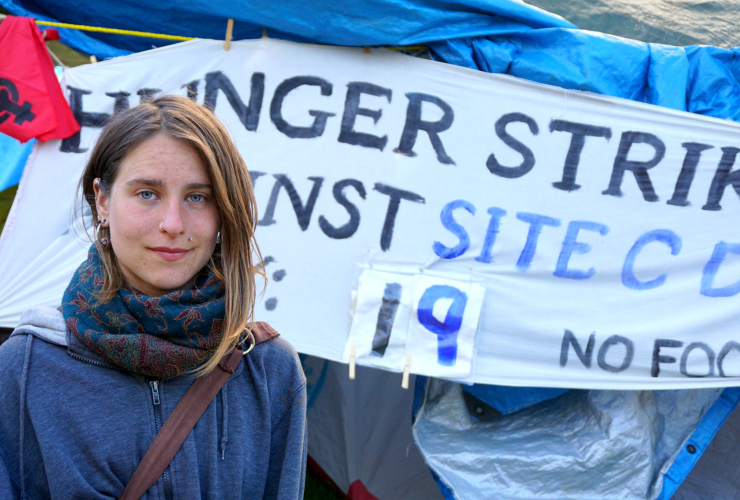The faces of those opposed to construction of a major hydroelectric development project in British Columbia came to life on Monday, in a new video released by environmental website Desmog Canada.
Interviewed by the site's Executive Director Emma Gilchrist, landowners, ranchers, First Nations and residents of the Peace Valley in northeastern British Columbia give arguments against the $8.8-billion Site C dam - a "clean energy" project, that would flood more than 100 kilometres of river valley bottoms along the Peace River and its tributaries.
Even though BC Hydro -the project's proponent- argues that the dam will produce enough power to light up roughly 450,000 homes per year, critics contest whether that power is necessary for B.C.
On top of that, some Indigenous leaders from Treaty 8 territory say that Site C would impact up to 337 archeological sites, would disrupt their livelihood and threaten B.C.’s food security by flooding highly productive agricultural land. Overall, the Indigenous leaders say the project would impact their constitutionally protected treaty rights.
Here's what they say on tape:
Disturbing the Peace: The Story of the Site C Dam. Video by Desmog Canada.
In spite of these allegations, BC Hydro representatives have said that out of the 13 Aboriginal groups that reside in the area, only the West Moberly and Prophet River First Nations remain opposed to the project in court.
Deciding about the
Deciding about the feasibility of a project includes Cost/Benefit. When deciding to proceed or not to proceed, there is a greater need to consider the implication of Error of Co-mission vs Error of Omission. With regards to Site C, the Error of Omission would occur if the decision was Not to proceed when it eventually there indeed was need for this power source. The error of delayed construction will likely result in significant increase in construction cost. The Error of Co-mission will occur with the building of new dam when it was eventually found this additional power was NOT needed or could have been achieved with updating existing power plants. The cost of this error would result in the destruction agriculture land, animals and the way and lively hood of aboriginals. Which error has the greatest implication?
bwqxrlf
bwqxrlf
http://www.elrincondeconstruir.es/045-moncler-chaquetas.html
http://www.hiqube.it/612-moncler-gilet-mens.aspx
http://www.circ.nu/ugg-verkkokauppa-636.html
http://www.twiceasnicetiara.co.uk/036-belstaff-racemaster-green.htm
http://www.pangchristianshavn.dk/barbour-waxed-mountain-parka-100.html
Botte Ugg Outlet
Barbour Roma Abbigliamento
Barbour Wax Jacket Black Friday
Ugg Kayel Leather
Cheap Ugg Boots Uk Sale





Comments